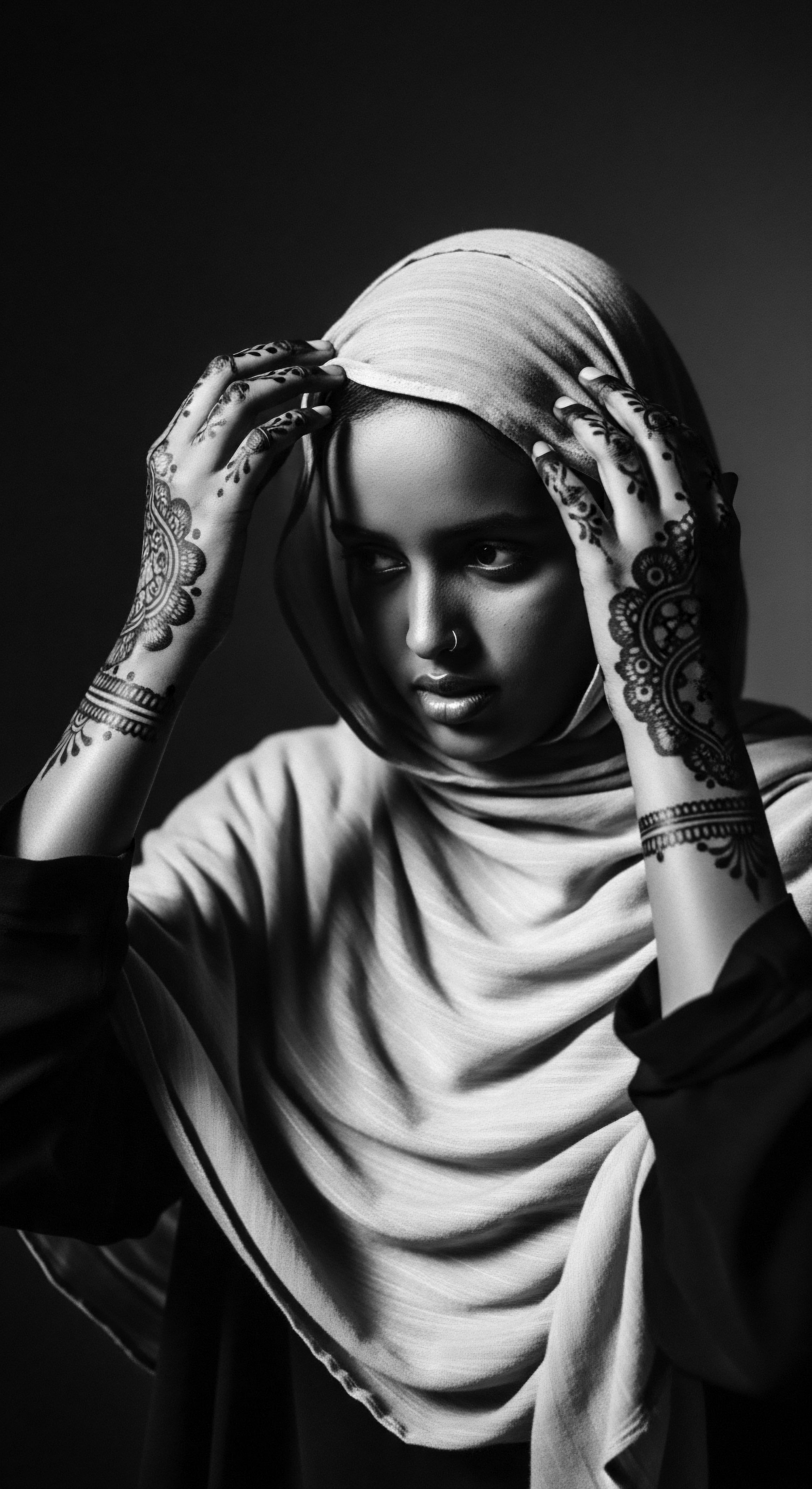
Roots
The whispered stories of our strands, of their resilience and singular beauty, stretch back through time, reaching into the deep earth of ancient civilizations. For those of us who carry the legacy of textured hair, the echoes from places like ancient Egypt are not simply historical footnotes. They are foundational elements, ancestral blueprints guiding our understanding of self and care.
How did ancient Egyptians, with their profound connection to beauty and spiritual life, approach the adornment of textured hair, particularly when it came to color? This question beckons us to look beyond mere pigments, seeking the cultural currents and scientific insights that shaped these practices for our hair heritage.
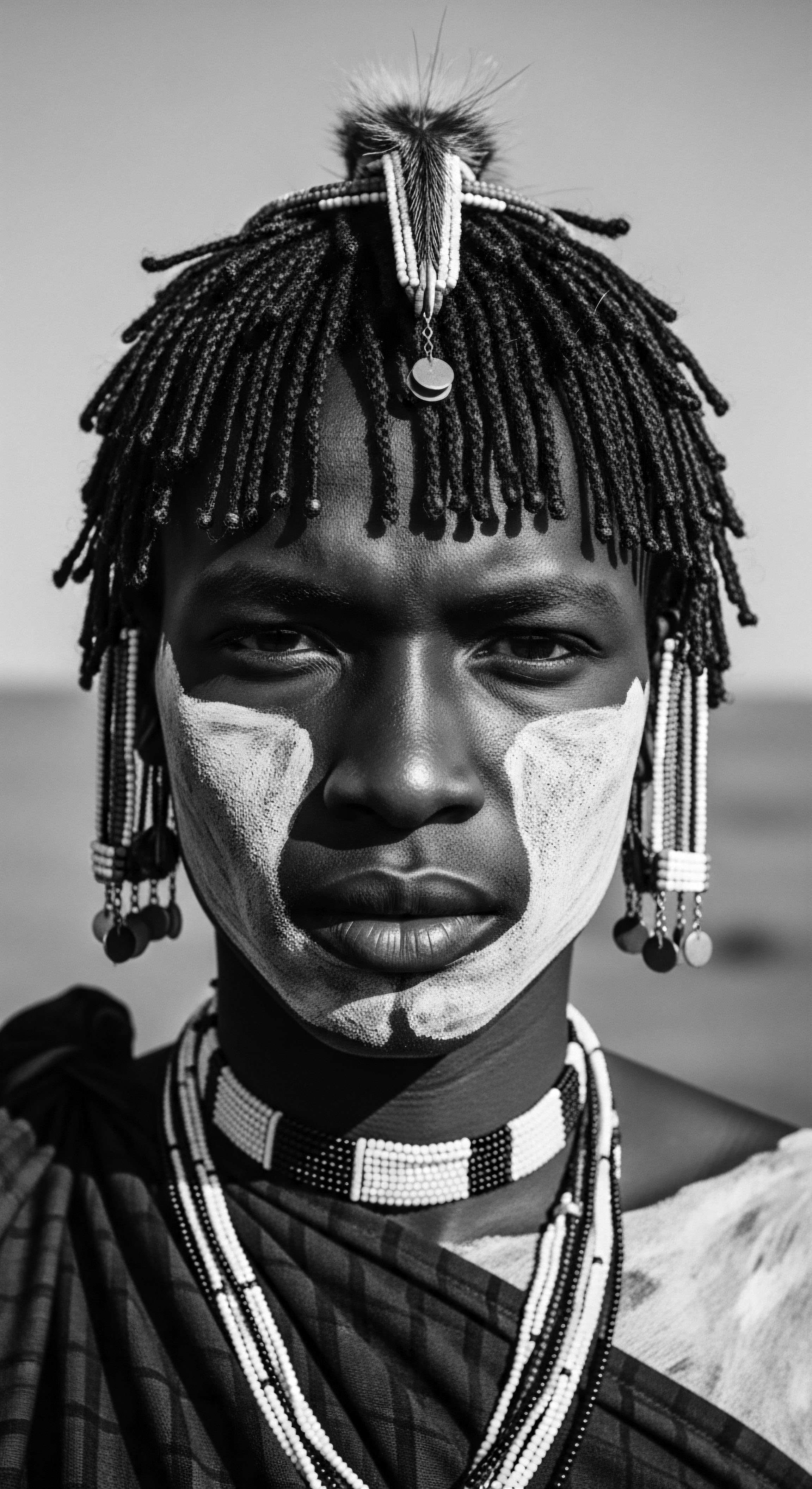
Hair as a Sacred Filament
In the sun-drenched lands of the Nile, hair held a meaning far beyond simple aesthetics. It served as a powerful signifier of social standing, spiritual devotion, and even individual identity. From elaborately styled wigs worn by the elite to the carefully maintained natural coils of commoners, every strand was considered a vital part of the self.
This reverence for hair suggests that any modification, including coloring, was approached with intentionality and often with a ritualistic sensibility. The very act of tending to one’s hair was a connection to the cosmic order, to the cycles of life and regeneration that permeated Egyptian thought.
Considering the prevalent hair types among ancient Egyptians, which spanned a spectrum from straight to coily textures, the methods of dyeing needed to adapt. Archaeological discoveries, including hair samples from mummies, affirm the diversity of hair types present within the population. This anatomical reality dictated the practical application of hair treatments, including dyes.
For textured strands, the cuticle’s structure—its layers and how tightly they lay—played a key role in how effectively natural colorants adhered. Unlike modern chemical dyes that penetrate deeply by altering the hair shaft, ancient plant-based dyes largely coated the outer layers, subtly binding with the keratin.
Ancient Egyptian hair practices offer a heritage-rich lens into the multifaceted symbolism of textured hair across time and cultures.

Ancestral Pigments and Their Sources
The palette of the ancient Egyptians, when it came to hair coloration, derived directly from the bountiful natural world around them. Their understanding of botanical and mineral properties, passed down through generations, allowed them to harness the earth’s own hues.
- Henna ❉ Sourced from the powdered leaves of the Lawsonia inermis shrub, which flourished in Egypt’s hot, arid climate, henna was the undisputed champion of ancient hair dyes. Its active pigment, lawsone, chemically bonded with the keratin protein in hair, nails, and skin, producing a warm reddish-orange hue. This was often used to cover gray hairs or simply to enhance natural hair color. The discovery of henna-dyed hair on mummies, including the pharaoh Ramesses II, provides concrete evidence of its widespread use and lasting effect.
- Indigo ❉ While henna provided red tones, the desire for darker shades led to the use of indigo, a plant-based dye derived from species like Isatis tinctoria. Though often associated with textiles, its application for hair, often in combination with henna, could create deeper, richer, even black, results. This practice aligns with the preference for dark hair, which often symbolized youth and vitality.
- Ochres and Mineral Pigments ❉ Beyond the vibrant botanical dyes, ancient Egyptians employed various earth pigments. Red and yellow ochres, derived from iron oxides, could have been used, perhaps as topical applications to create a lighter, more golden effect, as seen in some Nubian contexts. While their primary use was in cosmetics and art, the concept of blending minerals into hair treatments suggests a broader exploratory approach to color.
The preparation of these pigments involved intricate processes. Leaves were dried and ground into a fine powder, then mixed with liquids like water or oils to create a paste. This paste, varying in consistency, allowed for application to the hair, where it would remain for a period before being rinsed away. Such methods reflect an ancestral understanding of natural chemistry, a knowledge passed down through the hands that prepared these beautifying compounds.

How Hair Anatomy Receives Color
Understanding how these ancient dyes interacted with textured hair necessitates a glance at hair’s fundamental structure. Each strand of hair, regardless of its curl pattern, consists primarily of keratin, a protein. The outer layer, the cuticle, is composed of overlapping scales, like shingles on a roof.
These scales naturally lift to varying degrees depending on the hair’s texture. Coily and curly hair types often have a more raised cuticle, which can influence how external substances, including dyes, are absorbed or deposited.
Natural dyes, especially henna, bind to the keratin on the hair’s surface and within the cuticle layers. They do not significantly alter the hair’s internal structure in the same way modern oxidative dyes might. This surface-level action made them particularly compatible with the delicate yet strong nature of textured hair. The lawsone molecule in henna, for instance, forms a bond with the keratin, effectively staining the hair rather than stripping and recoloring it.
This approach, rooted in the very biology of the hair strand, ensured that coloring rituals were often also conditioning treatments, preserving the integrity of the hair. This holistic benefit would have been deeply appreciated in a climate that demanded robust hair health.

Ritual
The application of color to textured hair in ancient Egypt was rarely a casual endeavor. It was a ritual, a thoughtful engagement with personal adornment that spoke to social standing, spiritual beliefs, and aesthetic ideals. These practices, though ancient, echo the profound connection many still feel to their textured hair today, viewing it not merely as strands but as a vibrant extension of self and a link to heritage.

Preparing Hair for Sacred Pigments
Before the dyes were applied, a process of preparation would have taken place. Hair was regularly cleansed, often with mixtures of water and alkali salts, then nourished with various oils and conditioners. This preparatory step was vital, particularly for textured hair, which benefits from hydration and a clean canvas for optimal product absorption.
Given the dry desert climate, maintaining the hair’s moisture was paramount to prevent breakage and maintain its vitality. Wigs, too, were meticulously cared for, often employing emollients and oils derived from vegetables or animal fats to maintain their integrity and style.
The tools of the ancient Egyptian hairstylist were simple, yet effective. Combs crafted from bone or ivory, and perhaps even heated metal rods for curling, were used. For the application of dyes, mixing bowls and spatulas would have been common.
The powdered dyes were mixed with water, and sometimes other liquid ingredients like lemon juice or oils, to form a workable paste. This careful concoction ensured the pigment’s efficacy and ease of application onto diverse hair textures, from tightly coiled strands to looser waves.
Ancient dyeing practices were not solely about changing hue; they were acts of intention, preparing textured hair to carry cultural and spiritual meaning.

How Were Dyes Applied to Textured Hair?
The nuances of applying natural dyes to textured hair in ancient Egypt required skilled hands and a deep understanding of the material. Unlike straight hair, which allows for a straightforward comb-through, textured hair, with its natural bends and coils, needs careful sectioning and saturation to ensure even coverage.
The paste, once prepared, would have been applied generously, working in sections to coat each strand from root to tip. For centuries, across various African cultures, hands have been the primary tools for applying nourishing treatments and adornments to hair, and it is safe to surmise the same was true in ancient Egypt. The warmth of the hands would have aided the dye’s penetration and activation.
Given the time natural dyes need to develop, the mixture would remain on the hair for several hours, perhaps covered to maintain warmth and moisture, before being rinsed out. This method closely parallels traditional henna application techniques still practiced in many parts of Africa, the Middle East, and South Asia today.
Evidence of these practices can be seen in archaeological findings. For example, analyses of mummy hair samples have revealed the presence of henna, confirming direct application. Ramesses II, a pharaoh of the Nineteenth Dynasty, had red hair which was sustained or enhanced with henna, a practice potentially aimed at restoring a youthful appearance even after death. This detail underscores the profound symbolic weight given to hair color in ancient Egyptian society and its connection to vitality and status.

The Purpose of Hair Color in Ancient Life
Beyond mere cosmetic appeal, the dyeing of hair in ancient Egypt served multiple, deeply ingrained purposes, connecting directly to societal structure, spiritual belief, and individual identity.
- Symbolic Meanings ❉ Hair color was often laden with symbolism. Darker shades, often achieved with henna and potentially indigo, were associated with youth and nobility, reflecting a desired aesthetic of vitality and social standing. The rich, earthy tones provided by henna also echoed the fertile lands of the Nile, a source of life and abundance.
- Covering Gray ❉ One practical purpose, much like today, was to conceal the signs of aging. Graying hair was seen as a departure from youthful vigor, and natural dyes like henna offered a way to restore a more desired, youthful appearance.
- Ritual and Post-Mortem Use ❉ Hair had spiritual significance, sometimes offered as part of religious rituals or rites of passage. The presence of dyed hair on mummies suggests that hair coloring extended into the afterlife, ensuring a complete and idealized representation of the individual for their journey into eternity. This practice of post-mortem dyeing speaks volumes about the enduring importance of personal presentation, even beyond earthly existence.
Consider the case of a woman whose remains were discovered in the ancient city of Amarna, dating back over 3300 years ago. Her hair, though not mummified, still retained traces of an orange-red dye on her graying strands. This suggests a desire to maintain a youthful appearance, a practice that transcends millennia and cultural divides, linking her experience directly to contemporary textured hair journeys seeking vibrant color. (Bos, 2014)
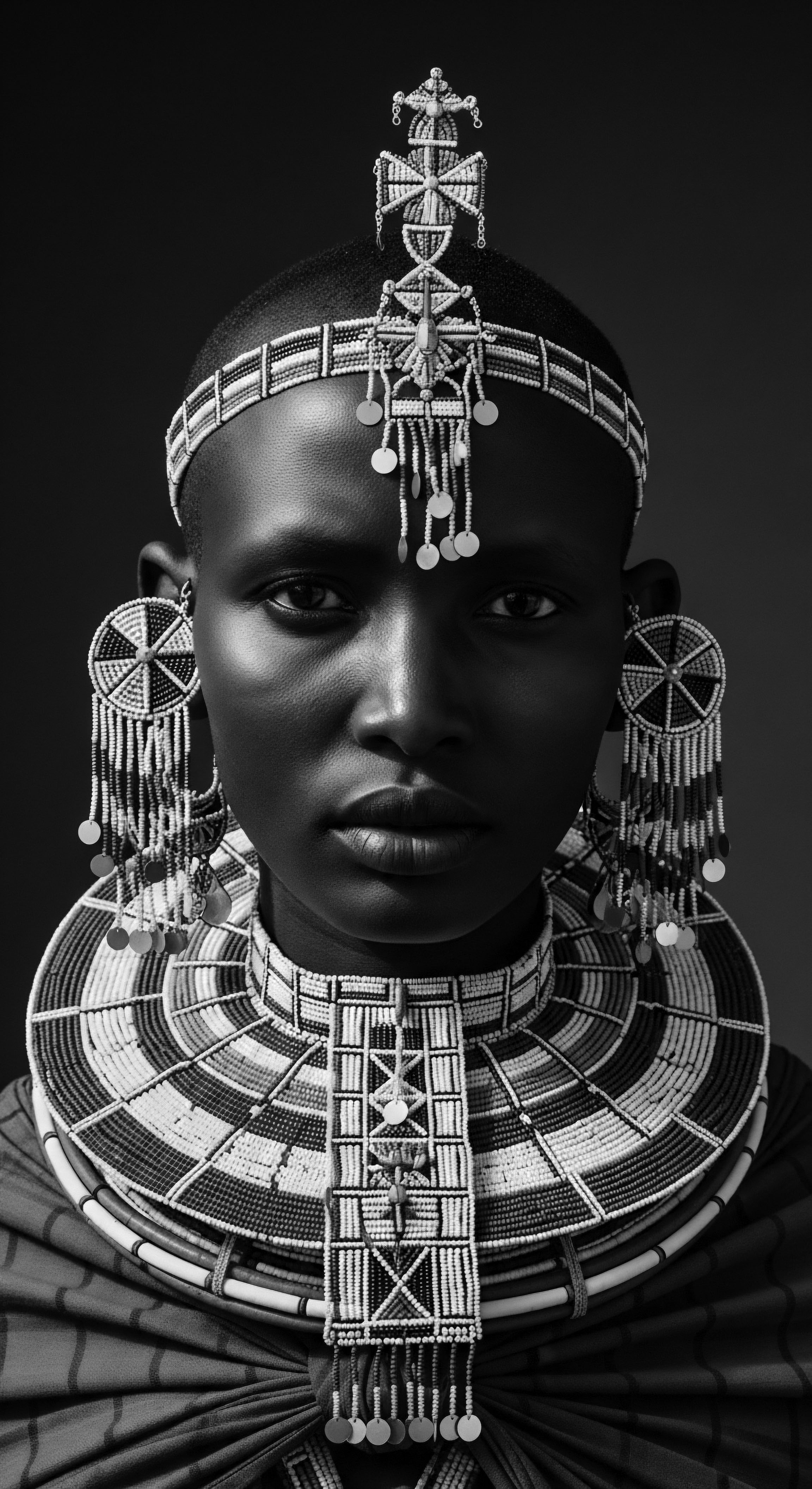
Relay
The practices of ancient Egyptian hair dyeing, particularly for textured hair, were not merely rudimentary beauty treatments. They represented a sophisticated understanding of natural chemistry and a profound connection to the body as a canvas for cultural and spiritual expression. These ancestral methods, passed down through generations, resonate deeply with the modern natural hair movement, showcasing a timeless pursuit of holistic beauty.

Understanding Ancient Dyes at a Molecular Level
How did these natural dyes chemically interact with the unique structure of textured hair? Modern scientific analysis offers a deeper appreciation for the ingenuity of ancient Egyptian practices. Henna, derived from the plant Lawsonia inermis, contains a molecule called lawsone. This molecule possesses a natural affinity for keratin, the primary protein component of hair.
When applied as a paste, lawsone molecules bind to the free amino groups within the keratin structure. This process is a subtle yet durable form of staining, adhering to the outer cuticle layers and sometimes partially penetrating the cortex. The result is a translucent layer of color that shines through the hair’s natural pigment, creating rich, reflective tones.
This mechanism is distinct from modern synthetic dyes, which often use ammonia and peroxide to open the hair cuticle and alter the hair’s internal melanin pigments. Ancient dyes worked in harmony with the hair’s natural state, preserving its structural integrity while imparting color. For textured hair, which can be more susceptible to dryness and breakage due to its coiled structure, this gentle approach would have offered significant protective benefits.
The lawsone molecule itself possesses conditioning properties, strengthening the hair shaft. This makes traditional dyeing not merely cosmetic but also a component of overall hair health.
The chemistry of ancient dyes reveals an intuitive wisdom that harmonized external adornment with the hair’s internal well-being.
Beyond plant-based solutions, there is evidence of the Egyptians exploring mineral-based blackening agents. Some research indicates the use of lead-based compounds mixed with a strong alkali. This combination would react with the sulfur atoms present in keratin, forming tiny lead sulfide (PbS) crystals within the hair shaft.
This process resulted in a permanent, deep black color. While modern science highlights the toxicity of lead, this ancient application demonstrates a pioneering, albeit unintended, understanding of nanoscale chemistry—the creation of minuscule particles that adhere deeply within the hair structure for lasting color.
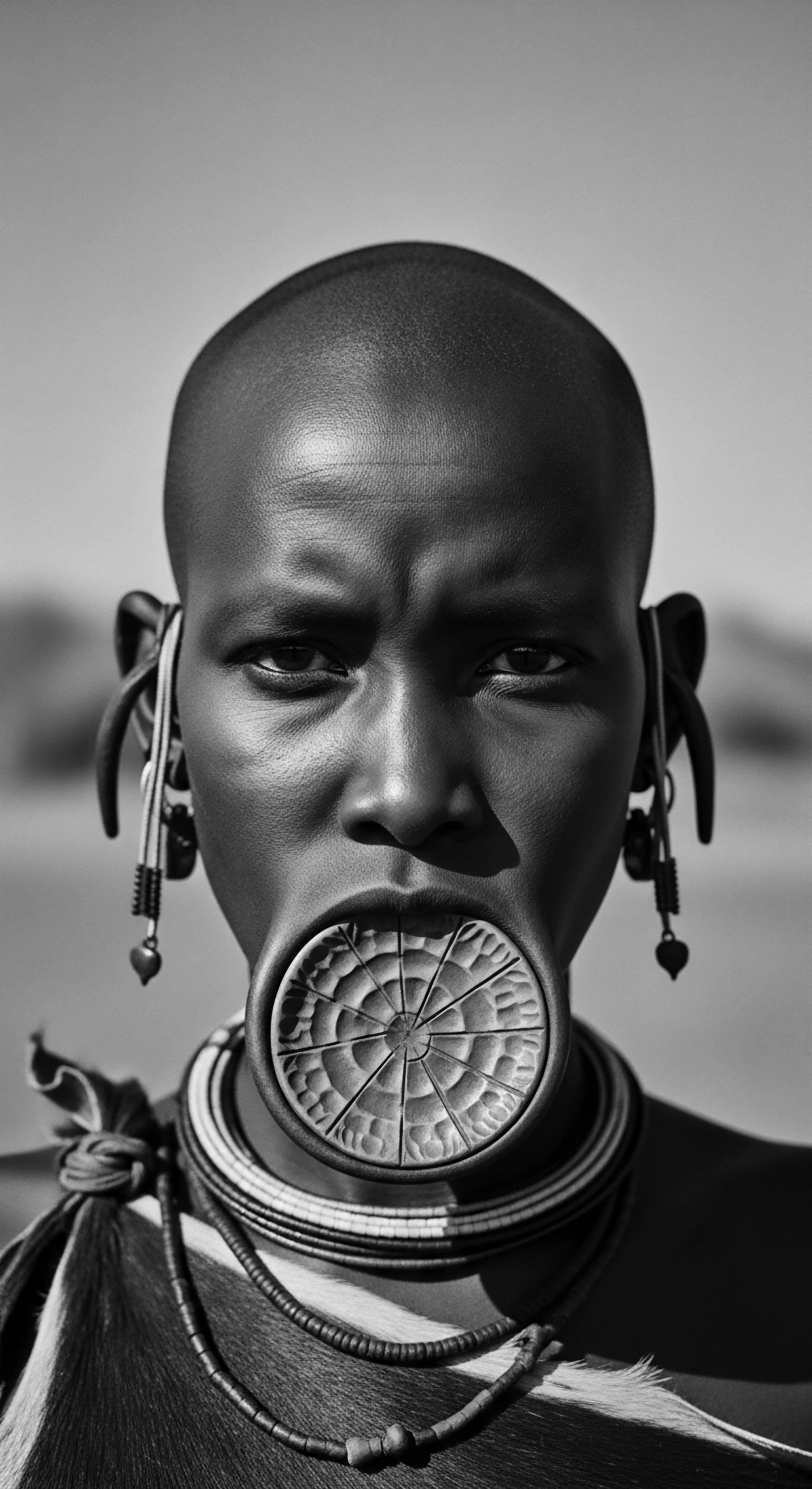
The Enduring Legacy of Ancient Hair Traditions
The ancient Egyptians laid a foundation for hair care and adornment that continues to echo in contemporary practices, especially within the textured hair community. Their reliance on natural ingredients and holistic methods finds a direct parallel in today’s movement towards clean beauty and ancestral wellness.
| Aspect Primary Dyes |
| Ancient Egyptian Practices (Heritage) Henna, Indigo, Ochres, Lead-based (for black) |
| Contemporary Natural Hair Dyeing Henna, Indigo, Cassia, Hibiscus, various herbal blends |
| Aspect Dye Mechanism |
| Ancient Egyptian Practices (Heritage) Coats cuticle, binds to keratin surface, subtle penetration |
| Contemporary Natural Hair Dyeing Similar surface coating and protein binding, non-oxidative |
| Aspect Hair Health Impact |
| Ancient Egyptian Practices (Heritage) Conditioning, strengthening, minimal structural alteration |
| Contemporary Natural Hair Dyeing Conditioning, added shine, reduced chemical damage |
| Aspect Cultural Context |
| Ancient Egyptian Practices (Heritage) Status, youth, spirituality, post-mortem preparation |
| Contemporary Natural Hair Dyeing Self-expression, ancestral connection, clean beauty, gray coverage |
| Aspect Tools Used |
| Ancient Egyptian Practices (Heritage) Hand application, combs, mixing bowls, heated metal rods (for styling) |
| Contemporary Natural Hair Dyeing Hand application, brushes, mixing bowls, modern styling tools |
| Aspect The continuum of natural hair coloring highlights a persistent ancestral wisdom regarding hair integrity and botanical properties. |
The techniques, tools, and intentions behind ancient Egyptian hair dyeing methods, particularly for textured hair, offer significant insights. The emphasis on natural, non-damaging ingredients speaks to an intuitive understanding of hair biology that predates modern chemistry. The very notion of applying plant-based pigments for both aesthetic enhancement and conditioning properties is a concept that resonates with deep ancestral wisdom, a wisdom now being rediscovered and celebrated in modern hair care. The methods used in ancient Egypt, like careful sectioning and saturation, were essential for ensuring the dye effectively coated textured strands, a practice mirrored by those who carefully apply natural colorants today.
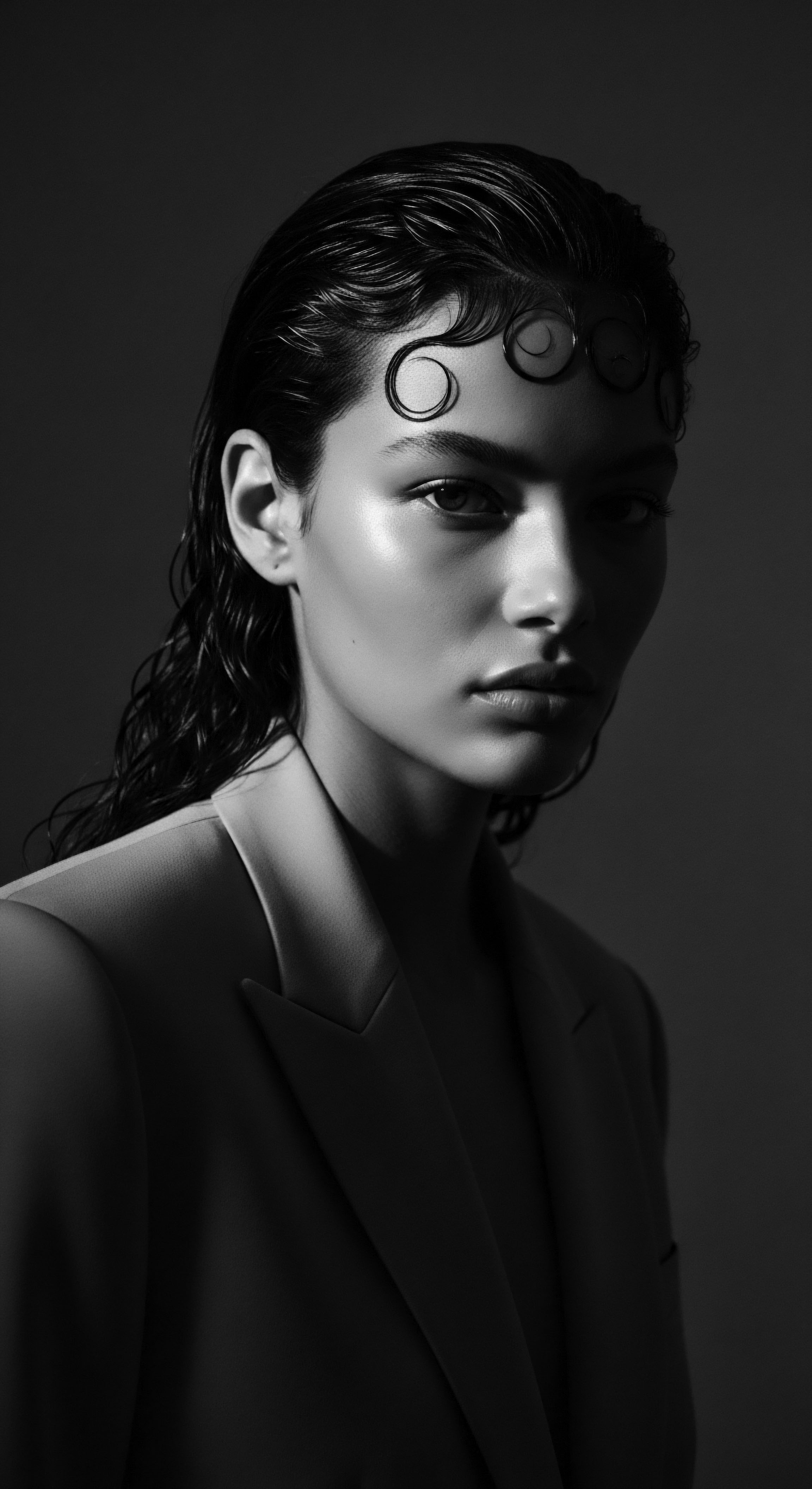
Cultural Continuities in Hair Adornment
The thread of hair adornment, particularly color, stretches across time from ancient Egypt into the present-day experiences of Black and mixed-race communities. The desire to enhance, define, or transform hair color, often using natural means, is a shared legacy. The communal aspect of hair care, where stylists or family members would dedicate hours to intricate braiding, styling, and presumably, dyeing, fosters connections that bind generations. These practices were not solitary acts; they were often moments of shared intimacy, knowledge exchange, and cultural reinforcement.
The visual evidence from ancient Egyptian tombs and artifacts frequently depicts individuals with dark, rich hair tones, often enhanced with dyes. This aligns with a prevailing beauty standard that valued depth of color and vibrancy. The exploration of how those dark tones were achieved, not just through henna but potentially through other botanical and mineral combinations, serves as a powerful reminder of the sophisticated and varied approaches to hair coloring within ancestral African societies. The continuity of using earth-derived pigments for hair adornment speaks to a long-standing reverence for nature’s offerings and a deep connection to the environment for personal well-being.
This historical continuity is not abstract; it lives within our contemporary textured hair heritage. The conscious choice to return to plant-based dyes for their health benefits, the pursuit of rich, vibrant tones, and the deep cultural significance attached to hair styling and color all reflect an unbroken lineage of practices that began thousands of years ago on the banks of the Nile. It is a testament to the enduring wisdom of our ancestors, whose knowledge of how to nourish and adorn textured hair remains relevant and powerful today.

Reflection
To consider how ancient Egyptians dyed textured hair is to lean into a conversation that stretches far beyond simple historical inquiry. It is a meditation on the soul of a strand, a recognition that our hair carries within it not just our genetic code, but also the whispers of our ancestors, their creativity, their wisdom, and their very ways of being. The meticulous care, the intentional selection of earthen pigments, and the ritualistic application of color to textured coils and curls in ancient Egypt were not mere acts of vanity. They were profound expressions of identity, status, and spiritual connection.
Each reddish hue from the henna plant, each deeper shade perhaps coaxed from indigo, speaks to a heritage of self-adornment rooted in a deep reverence for the natural world. These practices, born of necessity and elevated by artistry, remind us that the pursuit of vibrant, healthy hair is a journey with ancient origins. It is a journey that connects us to a lineage of innovation, a celebration of beauty that saw no distinction between the aesthetic and the sacred. Our Textured Hair Heritage is a living archive, and in the story of ancient Egyptian hair dyeing, we find yet another luminous chapter, inspiring us to honor our strands as vessels of ancestral wisdom, continually unbound and beautifully in motion.

References
- Bos, Jolanda. “Ancient Egyptian Woman with 70 Hair Extensions Discovered.” Journal of Egyptian Archaeology (2014).
- Lucas, Alfred. Ancient Egyptian Materials and Industries. Edward Arnold, 1962.
- Robins, Gay. Women in Ancient Egypt. Harvard University Press, 1993.
- Shaw, Ian, and Paul Nicholson. The British Museum Dictionary of Ancient Egypt. British Museum Press, 1995.
- Tassie, Geoffrey J. “Hair-Offerings ❉ An Enigmatic Egyptian Custom.” Papers from the Institute of Archaeology 7 (1996) ❉ 59-67.
- Walter, Philippe, et al. “Early Use of PbS Nanotechnology for an Ancient Hair Dyeing Formula.” Nano Letters 6.10 (2006) ❉ 2296-2300.
- Wolf, Barbara. “Henna as a Hair Dye ❉ A Current Fashion Trend with Ancient Roots.” Skin Pharmacology and Physiology 32.4 (2019) ❉ 185-190.
